Sweet Serendipity: Opening to Happy Garden Discoveries
Great gardeners are great planners. However, there is an unknown variable that occasionally interjects itself in our most logical equations, that unpredictable thing called serendipity. It’s defined as luck in the form of a happy accidental discovery, and most of us intuitively recognize it when it happens to us. It puts a smile on our faces. It causes us to slow down and ponder what is really important in life. It causes the rose gardener in each of us to actually stop and smell the roses.
For those new to gardening, serendipity can shock and surprise when it happens. For the artist or garden designer, the stage can be set through thoughtful placement of plants, beds and accessories. Still, serendipity is one of life’s fleeting mysteries. Embrace and celebrate it when it occurs.
My goal in writing this ideabook is to encourage you to open your eyes to serendipity so that you don’t miss it when it next happens to you. Let us know what you see.
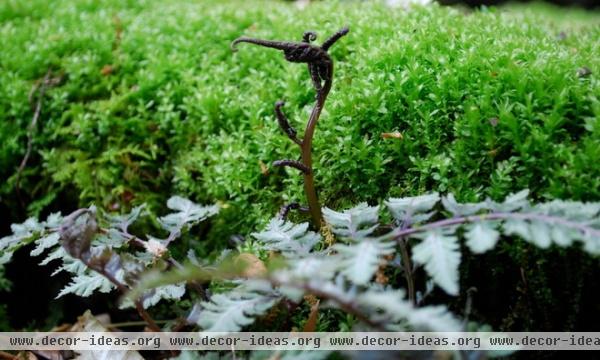
The miracle of spring. Spring, more than any other season, provides the opportunity for serendipity to happen to those who are open to it. Newly emerging plants change by the hour, literally growing before our eyes. I spotted this unfurling painted fern frond at the edge of my koi pond. It stopped me in my tracks, sending me down to my hands and knees for a closer look. The frond resembled, to my eye, a happy dragon emerging from a sea of color and texture. It was gone in several hours, but until then, it was exquisite.

The dance of light. Sunlight, particularly at dawn or dusk, has both a mystical and a sensual quality. If your garden resides in the shade, you are particularly fortunate in that you can see shafts of light piercing the tree canopy, highlighting its vignettes of choice throughout the day. I would urge you to open yourself to the sensual interplay among light, shadows and your garden elements. It can be mesmerizing.
The scene shown here occurs for about 15 minutes each day in my woodland garden. The morning sun pierces the canopy and backlights the ferns and begonias for an amazing yet fleeting show.
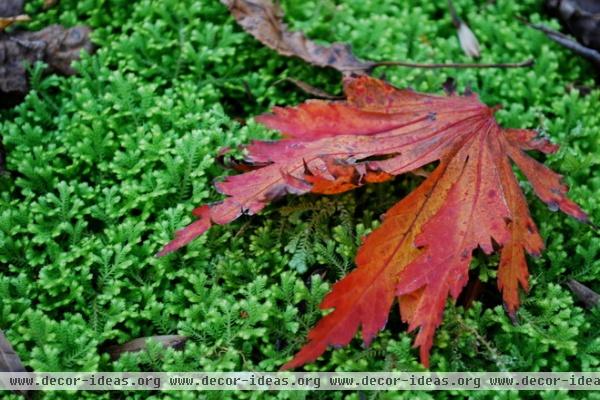
The changing seasons. A well-designed garden provides a stage for serendipity to occur year-round. This fallen maple leaf perched atop a lush carpet of club moss is a case in point.
Japanese maples are typically planted for spring and fall color; many of them lose their spectacular color during the warm summer months. Why not embrace them year-round as a seasonal chronology? Their form is shown to best advantage in summer, their structure in winter. Ridding ourselves of preconceived ideas is the first step in opening ourselves up to the miracle of serendipity.
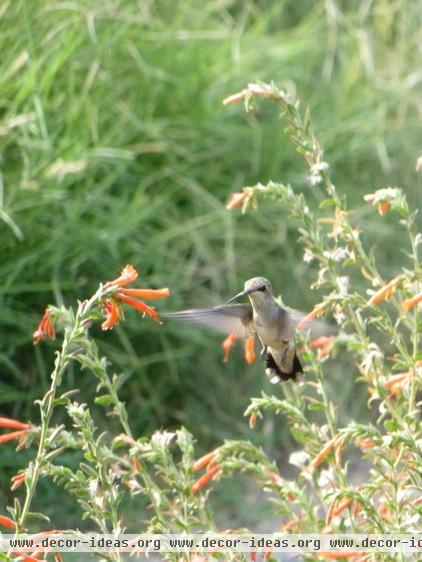
Discovering wildlife. A well-rounded garden is attractive not just to people. Wildlife adds a fascinating dimension to our outdoor spaces. Discovering a hummingbird hovering over a bed of agastache or salvia, or a flock of goldfinches descending upon rudbeckia or verbena, is a marvelous way to set the tone for your day.
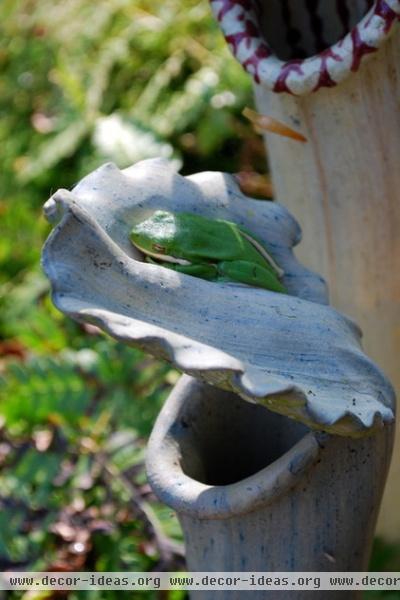
This little guy is clearly not intimidated by this Marcia Donahue sculpture of a carnivorous plant. I spotted him one afternoon as I was running up my front steps. After several minutes of watching him, I could barely remember why I was in such a hurry. Sometimes the most profound things are small and found where you least expect them.

Winter wonderland. Even ice can spark serendipity. The way it reflects and refracts light is magical. I see the head of a bird of prey in this scene. What do you see?
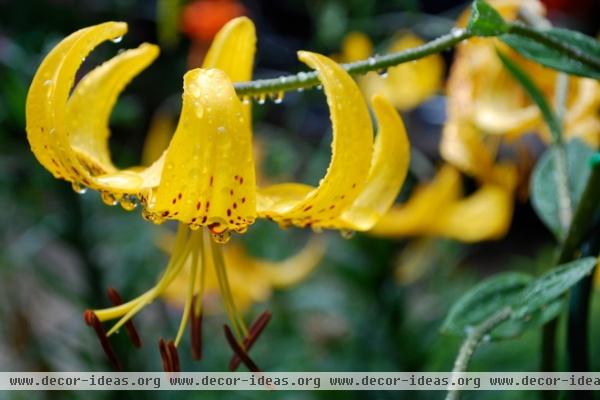
Summer rain. Arguably the best time to view a garden is after a summer rain. Tired plants spring back to life, colors are enhanced, and residual raindrops magnify minute parts of nature’s splendor. Notice how the raindrops are clinging rhythmically to this citronella lily (Lilium x ‘Citronella’, zones 4 to 8) after an evening thunderstorm.
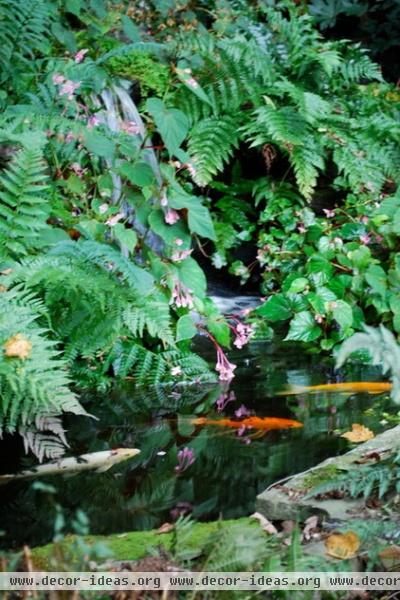
Don’t always be so quick to pull those weeds. I began planting the garden around my koi pond eight years ago, starting with five autumn ferns (Dryopteris erythrosora, zones 5 to 9). In the years since, fern spores have colonized the moss-covered rocks, producing more than a hundred plants, perfectly framing the waterfalls. The hardy begonias (Begonia grandis, zones 6 to 9) followed suit, the spawn of one lonely hitchhiker stowed away on a nursery plant. They freely seeded in the moss and, instead of pulling them, I decided to see what they would do. The show they produce is lovely.
One day last fall, as I was cleaning the pond filter, I looked up and was captivated by this scene. The begonias, reflected in the dark water, and the koi looking two-dimensional due to the angle of sight, reminded me of a Renoir or Monet painting.

Don’t forget your camera. Your camera will help you hone your senses to notice things that most people would overlook. Equally as important, your camera will help you develop an eye for composition, an invaluable skill when it comes to designing your garden or seasonal pot displays.
Consider viewing your garden photographs in black and white. When color is removed from the equation, your eye will see form and texture like never before.
Now go into your garden and uncover the hidden; rediscover why you became a gardener in the first place. Then post details of your treasures in the Comments below. We want to share in your serendipity.
More: Get Your Garden Moving for a Magical Mood












